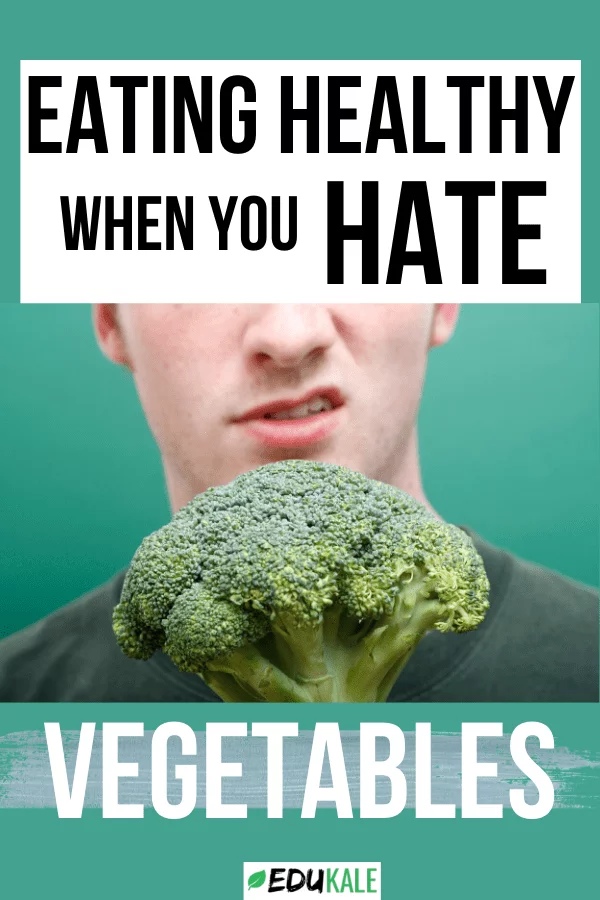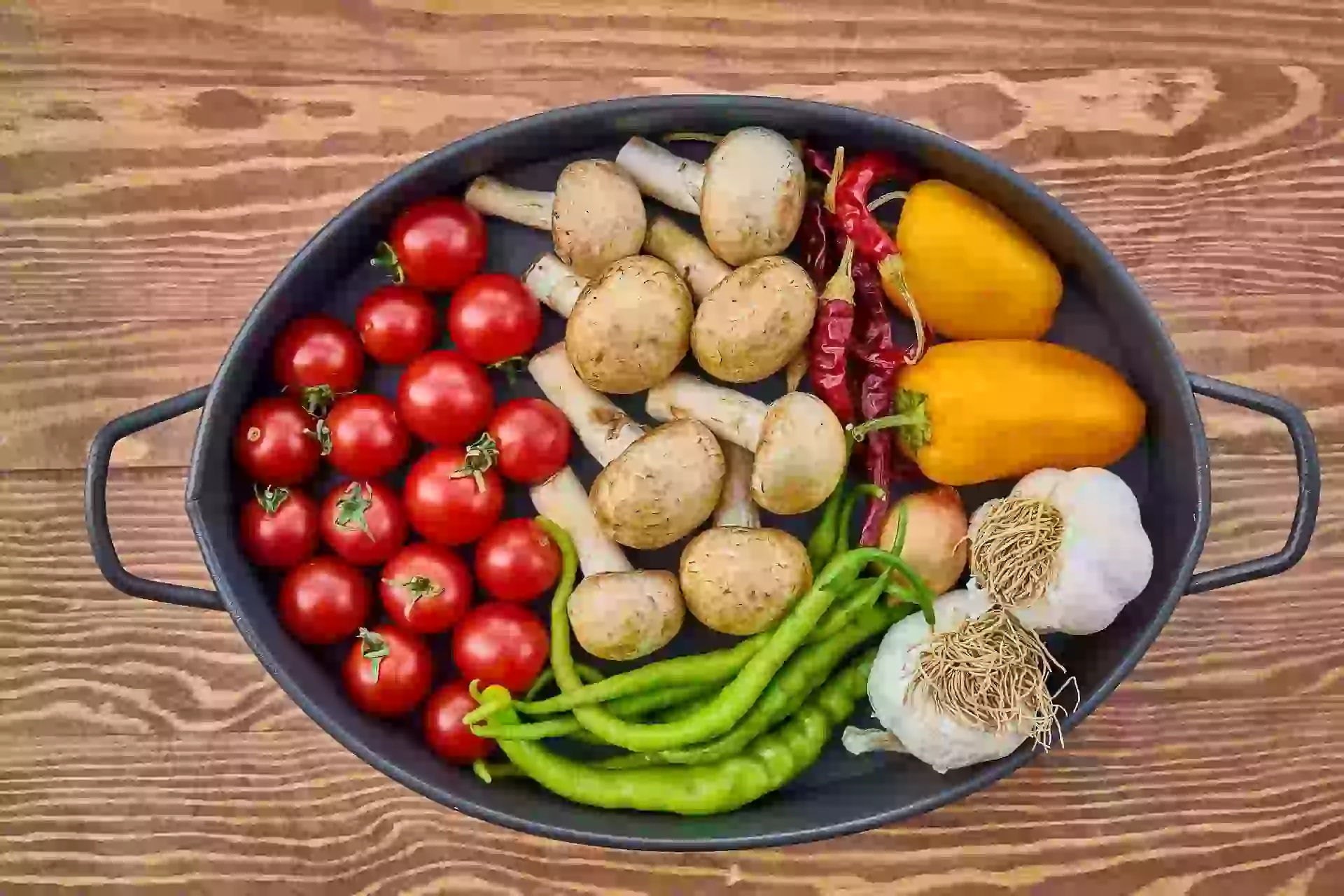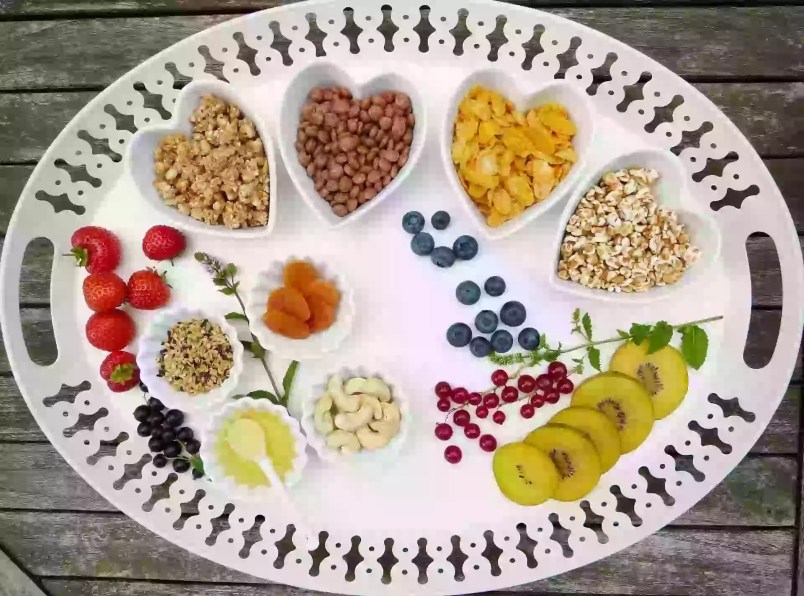This post contains affiliate links from which I may receive a small commission, at no extra cost to you. In no way does this affect my opinion or the information I provide on the product. Please read my disclaimer for more info.
Vegetables are one of the rare foods that are universally recognized as healthy, no matter the diet.
They have a vast amount of health benefits [1] and should always have a spot on our plate.
Problem is, a lot of people don’t actually enjoy them. They may hate the taste, the texture, or have no idea how to cook them.
Thankfully, there are a few ways to still eat healthy when you don’t like vegetables.

Figure out what you do like
First of all, it’s important to remember that there are so many different vegetables out there— there’s probably one you like, or at the very least tolerate.
Chances are you haven’t tried a lot of them for a long time and you’re just basing this off of distant childhood memories. Start by trying “commonly liked” vegetables such as carrots, green beans, cucumbers, broccoli, avocados, or tomatoes (yes the last ones are technically fruit but they are eaten as veggies), which aren’t as bitter.
The bitter taste can be really off-putting for a lot of people, as they possess “the bitter taste gene”, enabling them to taste a certain chemical substance in vegetables that other people can’t [2].
If you find a few vegetables that you do like, hold on to them and have them often!
If you don’t, don’t give up on them just yet.
The way you cook them can make a huge difference.
Of course, if you’re eating raw broccoli or microwaved Brussel sprouts, I can understand why you don’t like vegetables.
Instead, try to roast them in the oven or cook them Wok style. Experiment with different cooking times to see what you prefer. For example, I like my broccoli steamed until it’s almost mushy— I don’t enjoy it any other way!
There are also a bunch of things you can add to vegetables to make them more palatable.
For instance, I think any veggie tastes better with some olive oil, salt and, pepper. You can experiment with different spices, herbs, and seasonings to spice things up.
Whipping up a little sauce to drizzle on your veggies can also be a good idea. It’s better to eat veggies with sauce (as long as they aren’t drowned in it!) and actually enjoy them rather than not eating them at all. My personal favorite is coconut milk and curry sauce!

Sneak in veggies as much as you can
If these tips still aren’t doing the trick for you, another solution to get in some veggies is to sneak them into your usual meals. Here are a few ways to do that.
- Sneak them into your smoothies. Adding some spinach leaves or kale to your usual smoothie will change the color, but not the taste: it’s a great way to get in those nutrients without realizing it.
- Slide them into your sandwiches. Start out by adding a few veggies in there and gradually increase the quantity. You’ll be surprised at the amount of lettuce, tomatoes, onions, and cucumbers you can put in you sandwich before they become too overpowering!
- Mix them into your meals. There are so many recipes that include vegetables that don’t even seem like they’re there! You can mix spiraled zucchini with your spaghetti, add thinly diced carrots into your meatballs or mock meatballs, add some onions to any dish, put some squash in your mac and cheese…Here are a few ideas.
- Turn them into juice or soup. Sometimes, the texture of vegetables is more off-putting than the taste. This can easily be fixed by blending them into a nice warm soup! Make sure to mix them with your favorite ingredients and add some spices and condiments. You can also get a juicer in order to extract the juice from your veggies from a nutrient boost. You will be missing out on the fiber, however!
- Dip them into hummus, ranch, guacamole (more veggies!), plain, yogurt, or basically any dipping sauce that you enjoy. It’s better to enjoy some veggie dips than no veggies at all!

Get your nutrients from other sources
While vegetables are super healthy and deserve a spot on your plate, it’s important to get your nutrients from other sources if you can’t bring yourself to eat enough.
The first way to get them is by eating fruit.
Fruit and vegetables are often grouped when their benefits are discussed [3]: they are both amazing for your health. I personally like to have a serving of fruit with every meal, and more if I’m not having vegetables.
Starchy vegetables, such as potatoes, sweet potatoes, peas, corn, and butternut, are often enjoyed more than non-starchy veggies: make sure to fill up on them as well!
Legumes, such as lentils, beans, and chickpeas, contain plenty of fiber and nutrients that are found in veggies as well. Make sure to leave a spot for them on your plate!
Here are a few specific nutrients found in vegetables and where you can find them in other foods [4].
Fiber is found in vegetables but can also be found in fruit and whole-wheat foods. Check out this article for a list of high-fiber foods.
Folates (or vitamin B9), are found in asparagus, spinach, broccoli, or avocados. They can also be found in lentils, mangos, sweet corn, or oranges.
Vitamin C, found in veggies such as broccoli and bell pepper, can be found in oranges, kiwis, cantaloupe, grapefruit, and strawberries.
Vitamin E, found in avocados, spinach, or broccoli, can also be found in olive oil, kiwi, almonds, or sunflower seeds.
Vitamin K, found in leafy green vegetables, broccoli, and Brussel sprouts, can also be found in kiwis, prunes, and blueberries.
Carotenoids (vitamin A source), found in tomatoes, carrots, peppers, asparagus, pumpkin, and sweet potatoes, can be also be found in peaches, pink grapefruit, apricots, mangos, and watermelon.
Potassium, found in beet greens, avocados, white button mushrooms, and tomatoes, can also be found in potatoes, bananas, white beans, and salmon.
Magnesium, found in spinach, lima beans, or avocados can also be found in bananas, tuna, dark chocolate, almonds, or brown rice.
You can also read this article to learn more food sources that contain antioxidants, and check out this infographic to help you out with which foods contain which nutrients!

SOME FINAL TIPS
Finally, here are a few tips to help you maximize your vegetable intake even when you don’t like them.
- Buy some pre-cut frozen or canned veggies: it’ll take away the hassle of cutting up vegetables and you will be more likely to sneak them into your meals
- Meal prep: on a day where you’re feeling motivated to eat healthier, cook a few meals with hidden veggies and keep them in your fridge or freezer. You’re much more likely to eat the veggies when they are already all prepared!
- Meal plan: write out a meal schedule that includes as many vegetables as you can without feeling disgusted— and stick to it! Because if you decide what to eat on the spot after a long hard day and a growling stomach, I’m willing to bet you won’t choose the veggies.
- Keep on trying! You might not like any vegetables when you first try them, but you need to continue to test them again and again. It may take a while for your tastebuds to get used to the taste, but they most likely will. Try out different food combinations, different cooking methods, different sauces and condiments. You never know what might happen. For instance, I dislike both endives and honey, but pair them together and I actually enjoy it!
- You don’t have to like everything! Finding a few different vegetables you enjoy (or at least tolerate!) and having them often in different ways is totally fine. No need to force yourself to have every single one!
HOW TO EAT HEALTHY WHEN YOU DON’T LIKE VEGETABLES IN SHORT
Vegetables have many great health benefits, but not everyone likes them.
It’s important to try different veggies regularly in order to find the ones you do enjoy. Experiment with different cooking techniques, sauces, and recipes.
Make it more convenient by using frozen or canned veggies. Meal plan and even meal prep to eat your veggies without thinking about it.
If nothing works for you, you can always get most of the nutrients found in veggies from different sources. Fruit, legumes, whole-wheat foods, nuts, and seeds are great options.
-Lucie


Comments are closed.